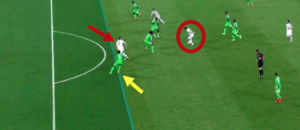Who is the most successful football club in England?
 When reading into English football, you’ll be introduced to a whole host of clubs who are known outside of the English and British shores. Clubs from the northern, middle and southern parts of England are recognised as some of the biggest in the world. To the northern part of England, we have teams from Liverpool and Manchester. Towards the middle of the country, we have teams from the Midlands and Yorkshire with massive support and fanbases. London, too, houses many big clubs. But who is the most successful overall?
When reading into English football, you’ll be introduced to a whole host of clubs who are known outside of the English and British shores. Clubs from the northern, middle and southern parts of England are recognised as some of the biggest in the world. To the northern part of England, we have teams from Liverpool and Manchester. Towards the middle of the country, we have teams from the Midlands and Yorkshire with massive support and fanbases. London, too, houses many big clubs. But who is the most successful overall?
As of 2020, the most successful club in England is Liverpool Football Club. The Reds are the most successful club in England with a whopping 48 major honours to their name. Having recently added major tournaments like the FIFA Club World Club, UEFA Champions League, and English Premier League, the Reds have usurped their eternal rivals Manchester United as the most successful club on English soil.
Since being founded back in 1888, the Football League has seen many clubs come into existence and do well. None, though, quite match up to Liverpool. Despite not being the record holders for league titles (United hold that record, with 20), or FA Cups (Arsenal), the Reds do have a European record on these shores with six European Cups; nearly as many as the rest of England put together!
With fourteen international titles to United in second place with eight, the Reds easily have a handle over their illustrious rivals on European shores. And with just a single domestic title now separating the two teams, it’s clear that this rival could be set for some to-and-fro over the next years.
In fact, Liverpool come out on top in every metric apart from Premier League and FA Cup wins when it comes to United: United, though, do have an Intercontinental Cup and a Cup Winners’ Cup – two defunct trophies that the Anfield side now cannot win.


